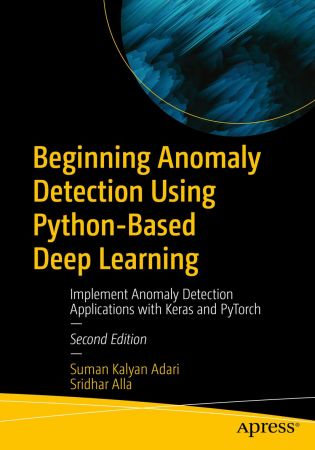Beginning Anomaly Detection Using Python-Based Deep Learning, 2nd Edition

https://DevCourseWeb.com
English | 2024 | ISBN: 9798868800078 | 538 pages | PDF,EPUB | 28.08 MB
This beginner-oriented book will help you understand and perform anomaly detection by learning cutting-edge machine learning and deep learning techniques. This updated second edition focuses on supervised, semi-supervised, and unsupervised approaches to anomaly detection. Over the course of the book, you will learn how to use Keras and PyTorch in practical applications. It also introduces new chapters on GANs and transformers to reflect the latest trends in deep learning.
Beginning Anomaly Detection Using Python-Based Deep Learning begins with an introduction to anomaly detection, its importance, and its applications. It then covers core data science and machine learning modeling concepts before delving into traditional machine learning algorithms such as OC-SVM and Isolation Forest for anomaly detection using scikit-learn. Following this, the authors explain the essentials of machine learning and deep learning, and how to implement multilayer perceptrons for supervised anomaly detection in both Keras and PyTorch. From here, the focus shifts to the applications of deep learning models for anomaly detection, including various types of autoencoders, recurrent neural networks (via LSTM), temporal convolutional networks, and transformers, with the latter three architectures applied to time-series anomaly detection. This edition has a new chapter on GANs (Generative Adversarial Networks), as well as new material covering transformer architecture in the context of time-series anomaly detection.


